Tricholoma caligatum is an edible mushroom, most notable for fooling people into thinking they've found matsutake. The good news is if you've found these mushrooms, you're on the right track. After reading this post you'll be able to easily separate the two mushrooms using a few, key ID points.
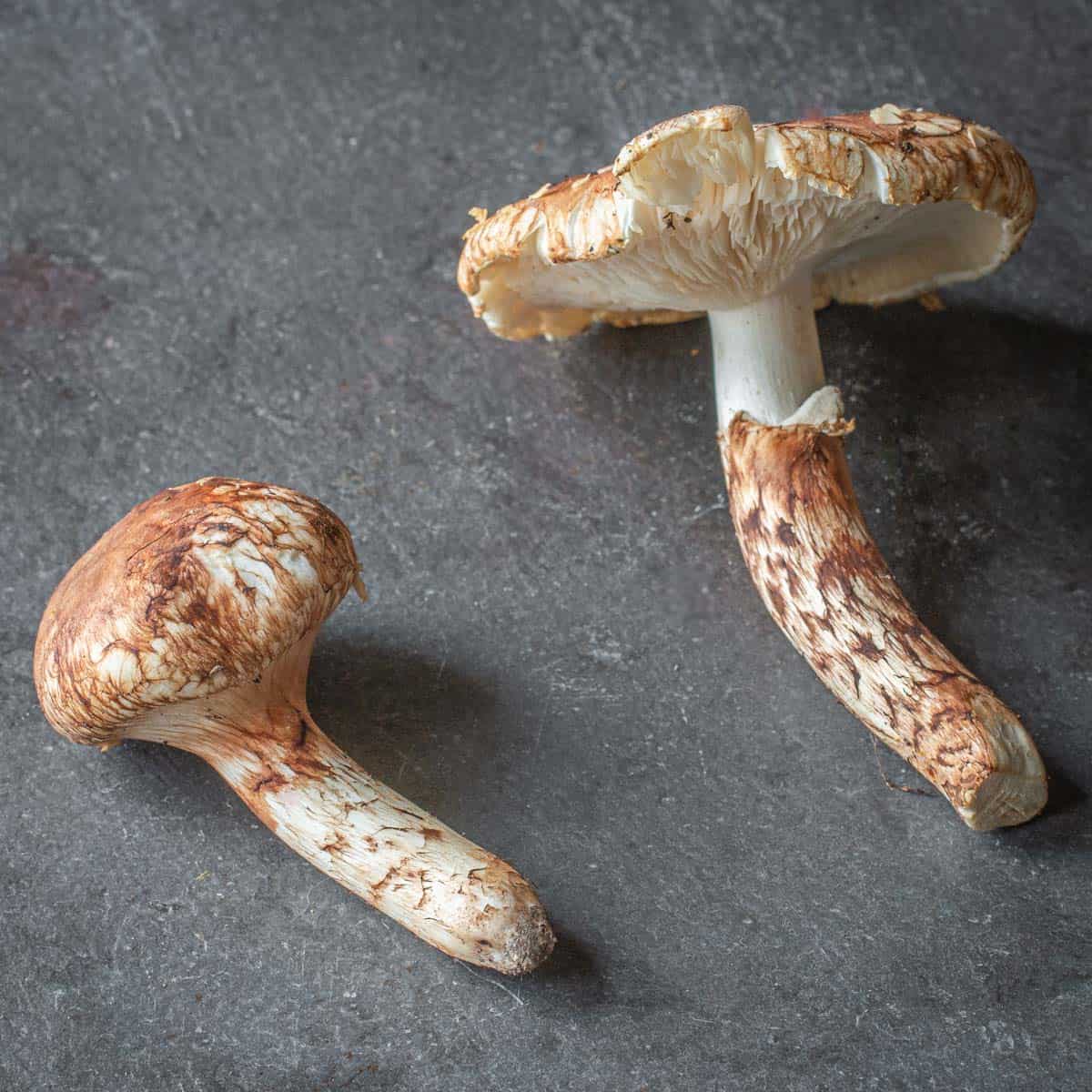
After I wrote about foraging matsutake (Tricholoma magnivelare) in Minnesota and Wisconsin I got a bunch of emails about the mushrooms. Most are pictures of Tricholoma caligatum.
A Matsutake Look Alike
Tricholoma caligatum, (formerly known as Armillaria caligata) is very similar to true matsutake at a glance. There's a few characteristics that give them away though. The good news is that all of the European and North American matsutake and T. caligatum are edible.
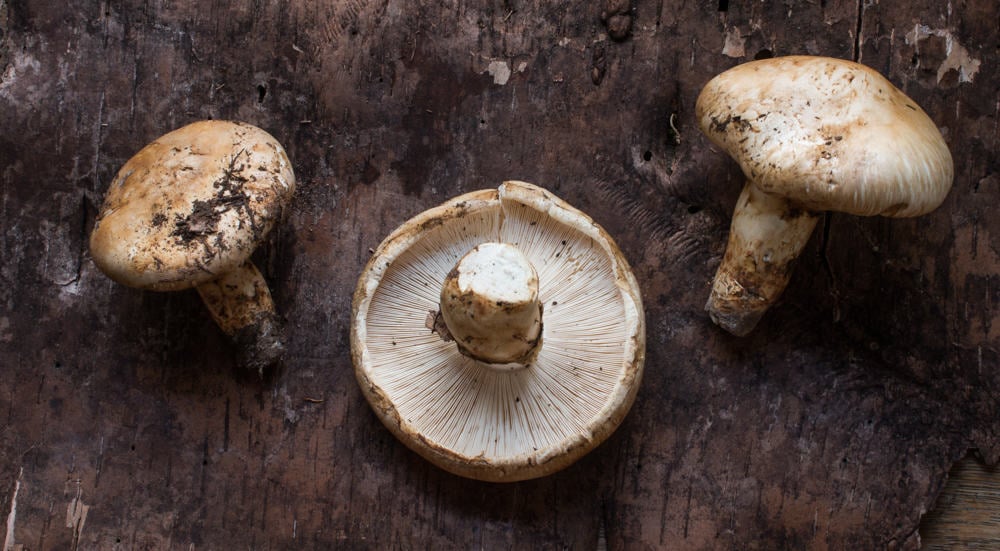 T. magnivelare
T. magnivelare
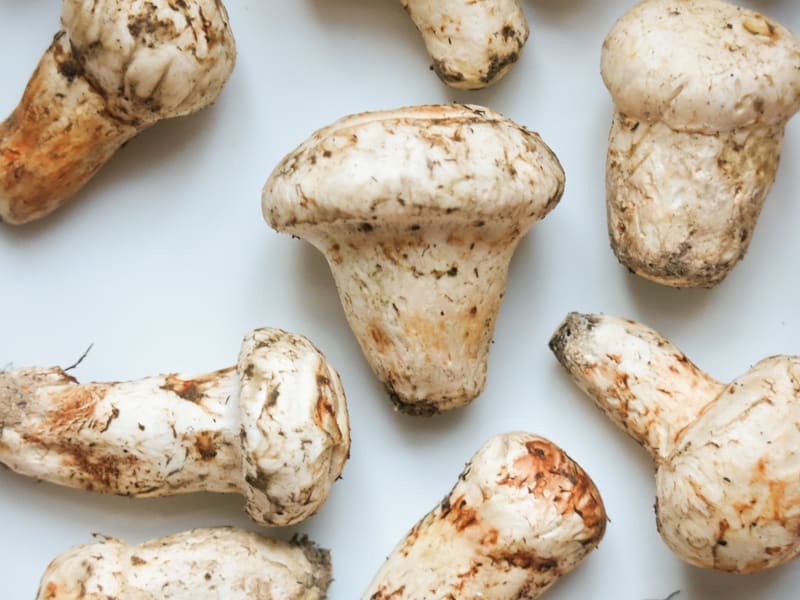 T. murillianum
T. murillianum
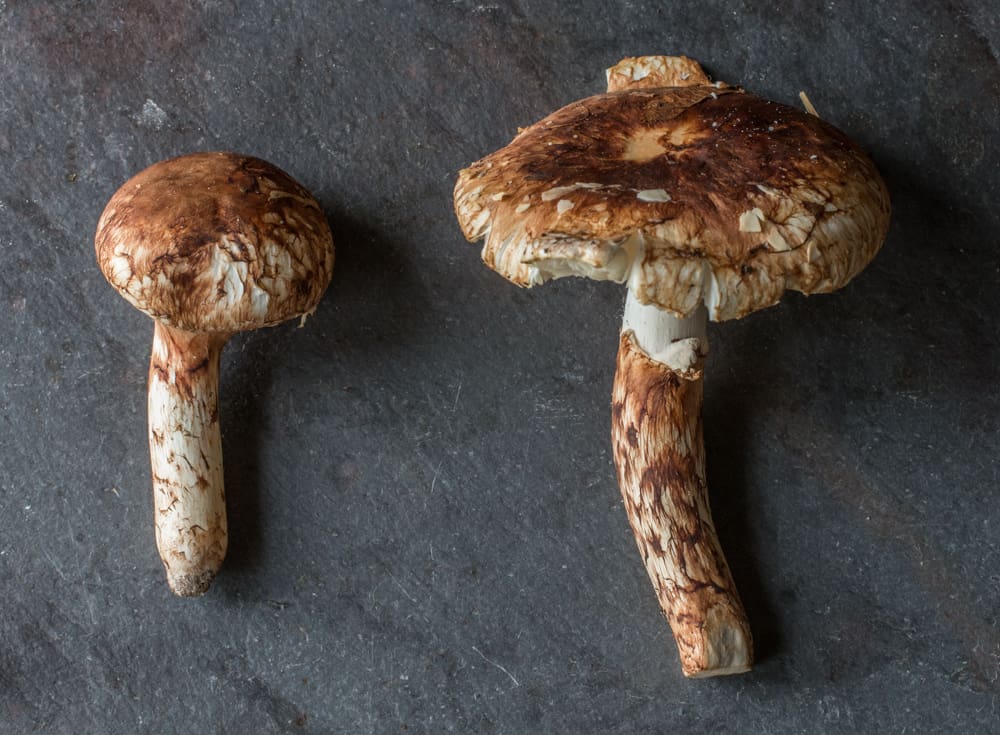 T. caligatum
T. caligatum
Tricholoma Caligatum Identification
Tricholoma caligatum (false matsutake) should technically only grow in Europe and North Africa. The North American species, while closely related, will probably get a new name sometime down the road.
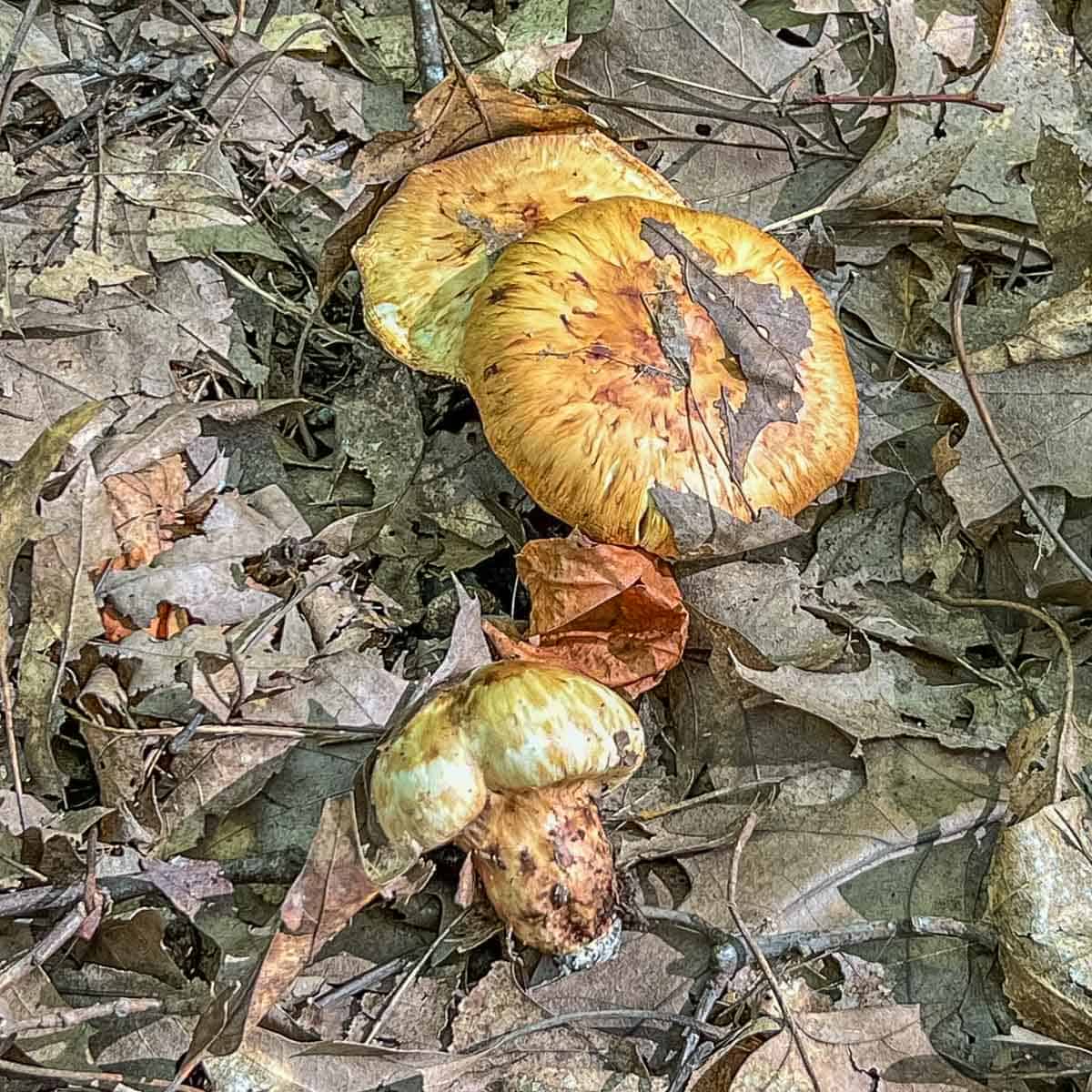
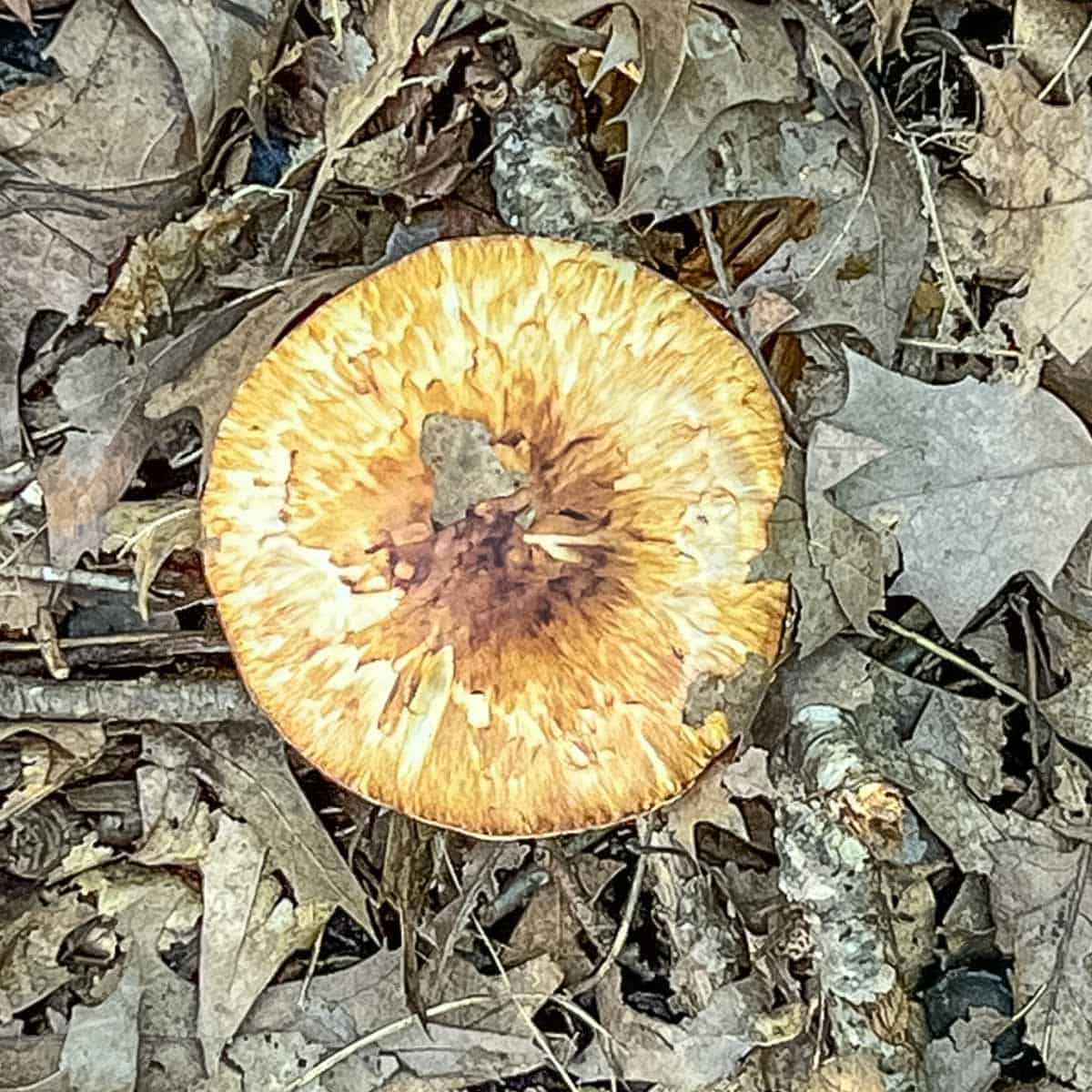
These mushrooms grow symbiotically with deciduous trees, especially oak and mixed hardwood forests in Minnesota, Wisconsin and the Midwest. Similar-looking mushrooms may grow with pine trees in different parts of the country.
One of the most notable characteristics is the "booted stem". The lower portion of the mushroom is sheathed with a brownish veil that can flare out at the top. Like matsutake, they may also have have their gills covered by a partial veil as they age.
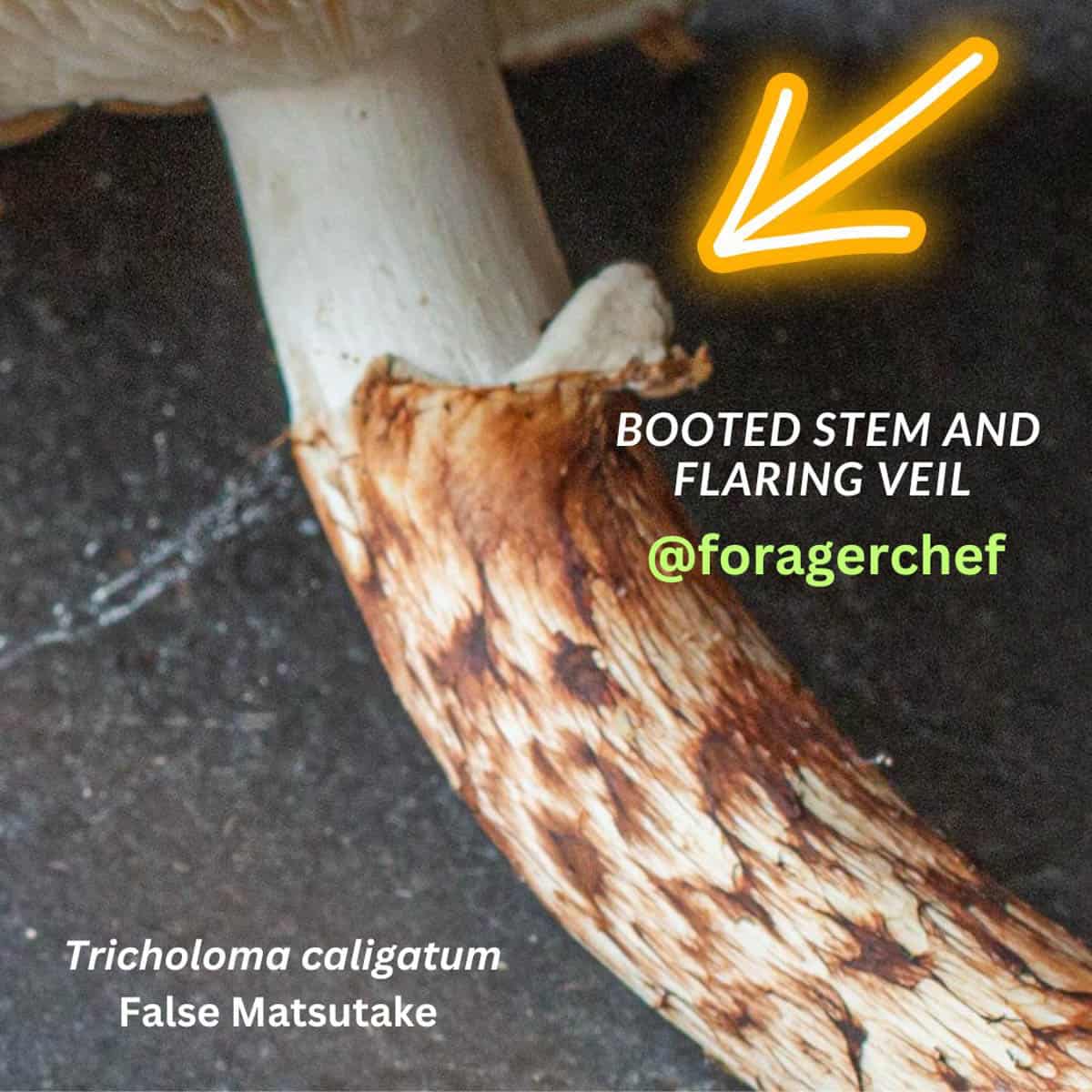
True Matsutake vs False Matsutake
- True matsutake grow only with conifers (red pine and jack pine are where mine grow). T. caligatum usually grows with deciduous trees.
- False matsutake do not have a strong smell. True matsutake have a unique mushroom smell: a spicy, aroma with hints of cinnamon.
- The matsutake I pick in Minnesota and Wisconsin are generally very large, heavy, and dense. I've picked some mushrooms that weigh over a pound each. False matsutake are usually smaller and lighter.
- The brown colorations on false matsutake I've collected are a deeper brown color more pronounced than in true matsutake.
Is Tricholoma caligatum bitter?
Keep in mind I'm a professional chef, not a mycologist. T. caligatum is part of a group or mushroom complex that needs genetic sequencing to separate the species. So, the Tricholoma caligatum I pick, might taste different than ones collected in other places in North America. Mushrooms from Costa Rica, Pennsylvania, or California might taste different too.
None of the false matsutake I've picked have had bitterness to them in the typical sense I would describe. The specimens I've eaten have a mild mushroom flavor.
There is a taste alongside the mushroom flavor. It isn't the strong bitter taste of Tylopilus felleus or other bitter boletes, but some have had a mild after taste. I haven't found the flavor unpleasant.
That said, bitterness in collections of T. caligatum seems to be pretty well documented. My advice is to chew a tiny amount and spit them out, making sure that you have ruled out Amanita species.
More
Guide to Matsutake (Pine Mushrooms)

Adnan
Very interesting as a subject.
I would like to have more details on the variety of Tricholoma matsutake and Tricholoma caligatum
Can you tell me which variety is in symbiosis with cedar wood? Tricholoma matsutake or Tricholoma caligatum?
What is the current value on the wholesale market of the variety Tricholoma caligatum?
Thank you in advance
Alan Bergo
Couldn't tell you. The market price of caligatum is non-existent. They're not sold commerically to my knowledge. Some are supposedly bitter, but those reports are not in my region.
Adnan KAROUN
Thank you for your reply.
Also, you have no ideas on the varieties that are harvested under the cedar woods?
Thanks for the compliment
Alan Bergo
I can't speak to species harvested under cedar, no.
Randy
So I've found a couple of false ones. How would I cook these? I tried your recipe for cooking real Matsutake mushrooms in parchment, but wasn't thrilled with the outcome, especially after addimg the lime juice. Perhaps just a butter and garlic saute would work?
Alan Bergo
Randy, sorry you didn’t care for the Matsies en pappillote—-steamed shrooms aren’t for everybody. T. caligatum is way different than true matsies, I’d just sauté them up like “regular” mushrooms if you’re aren’t bitter (mine aren’t). Alan
Joe Sandegren
True Matsutake do grow in and around Oak trees, specifically in Northern California, and possibly Southern Oregon. They are sometimes called "Tan Oaks" in that area.
Alan Bergo
Thanks Joe.
Marie
Great post, Alan! Found is after looking up false matsutake...
Alan Bergo
Thanks, I had to put it up this year after getting swamped with photos and emails. Easy to tell apart, especially if you’ve eaten the real deal.